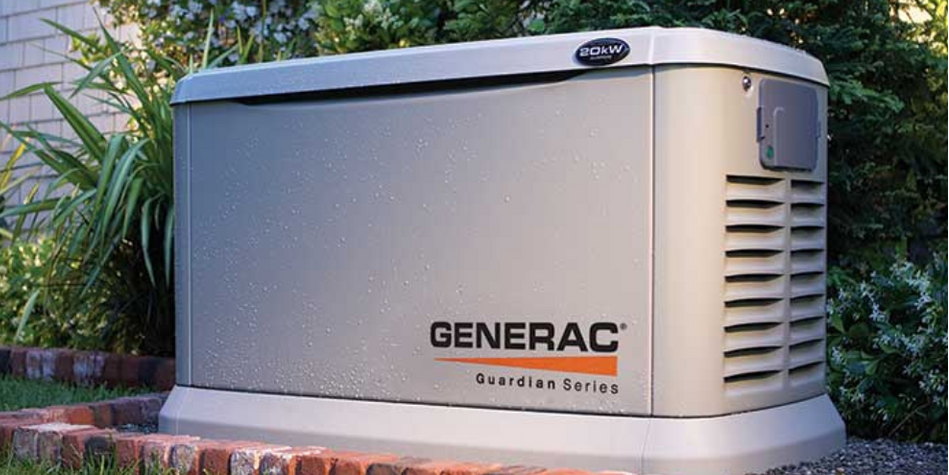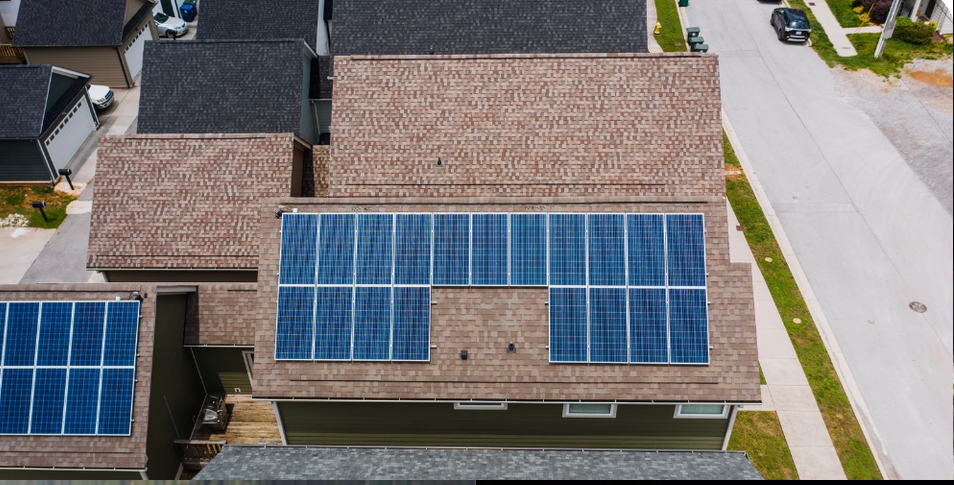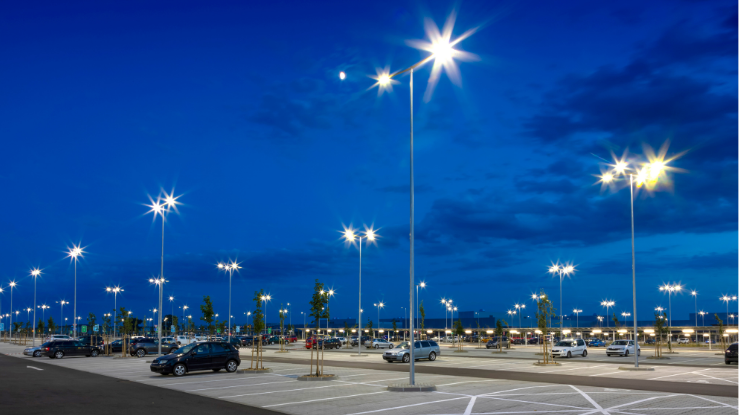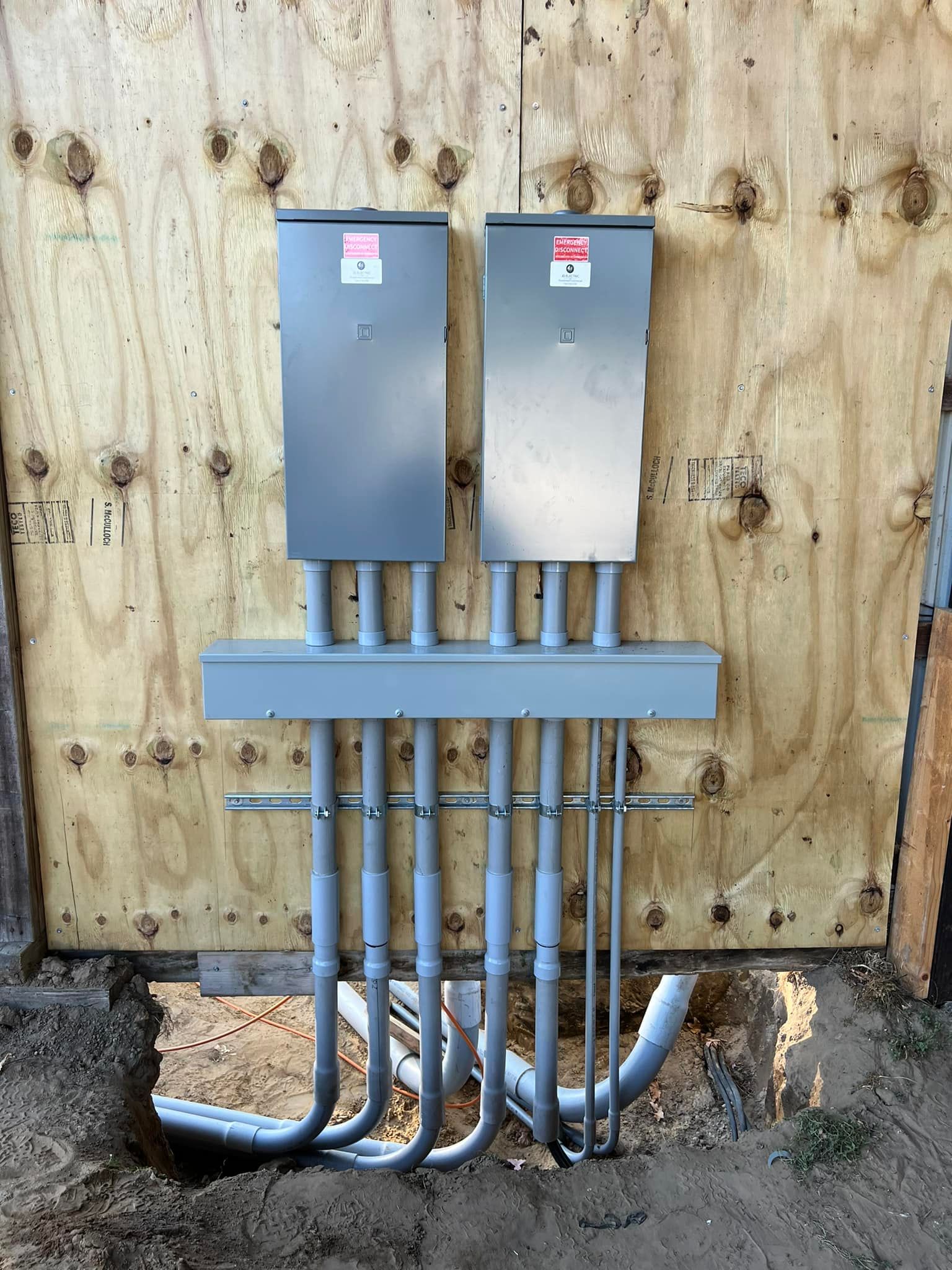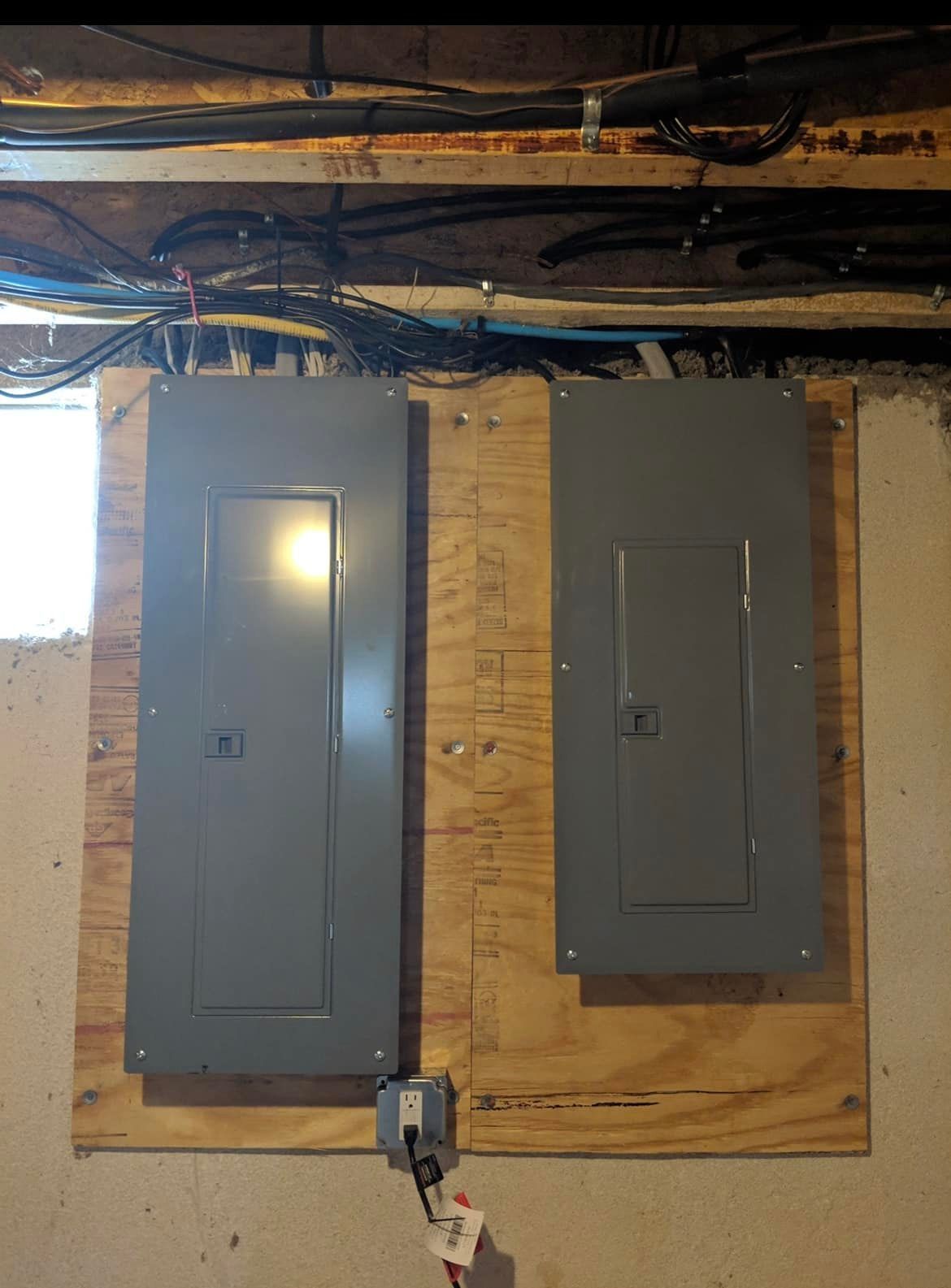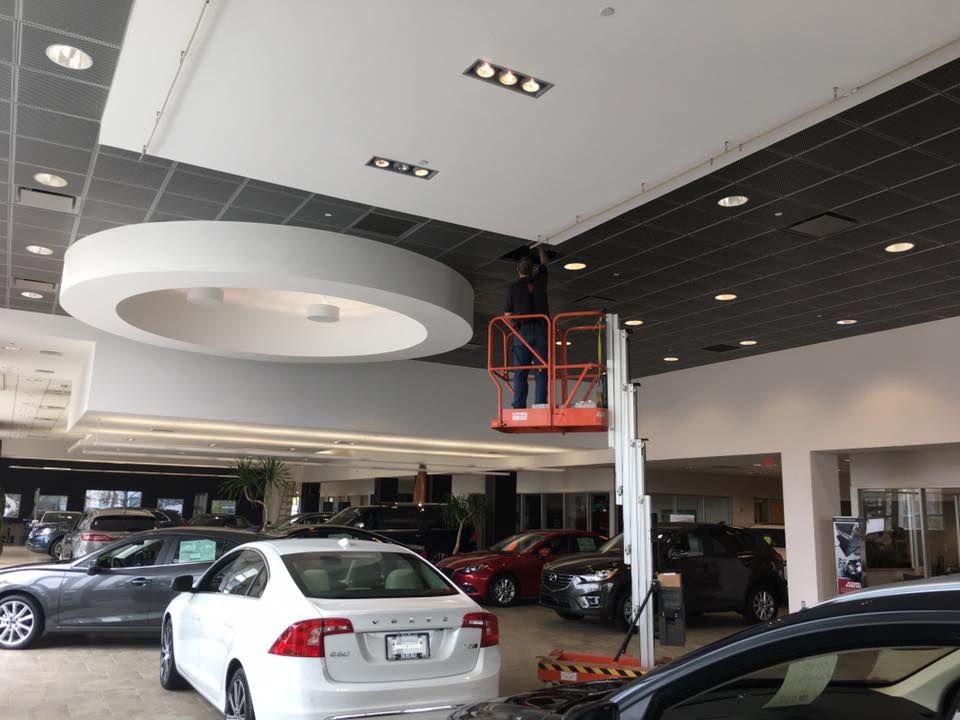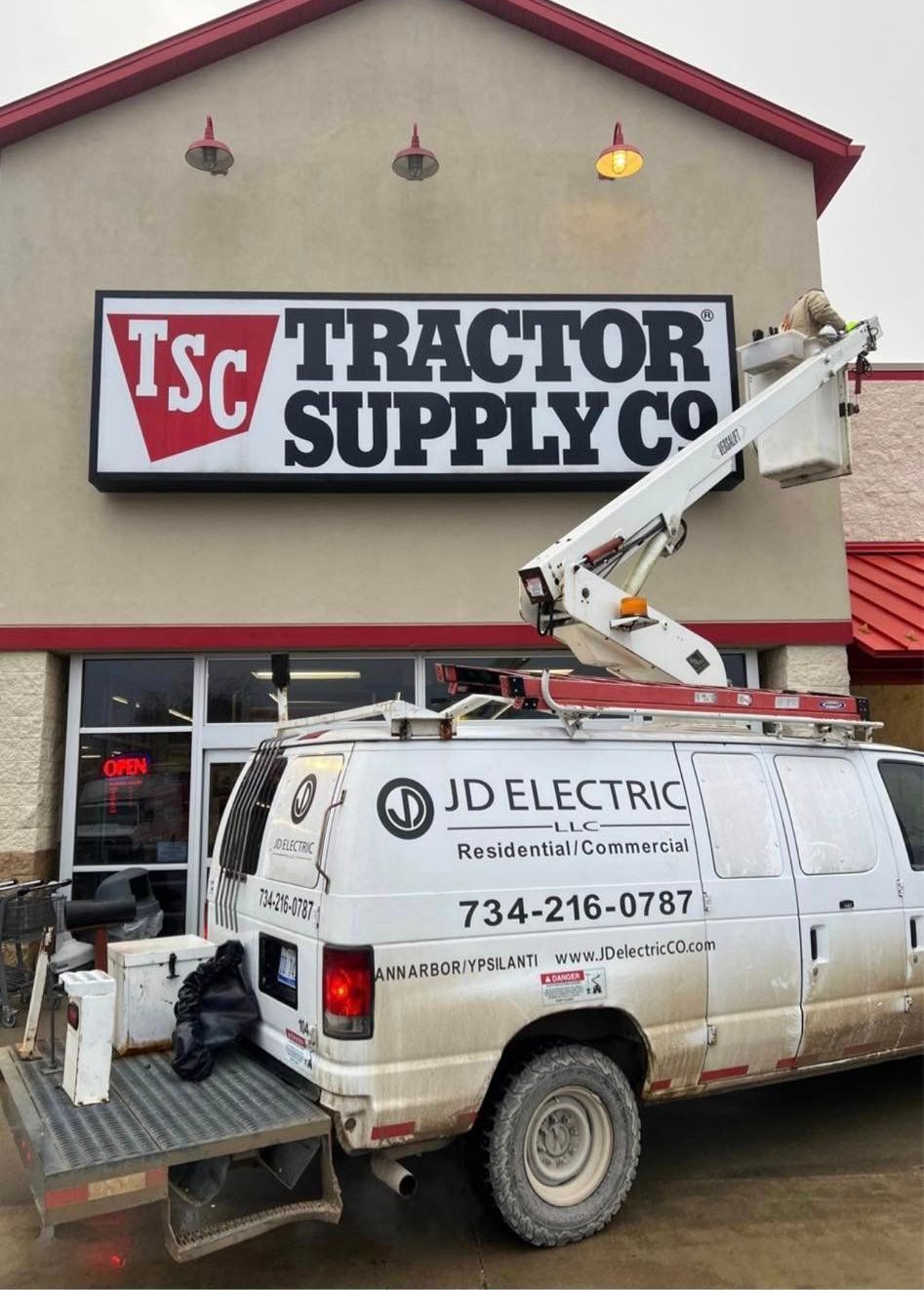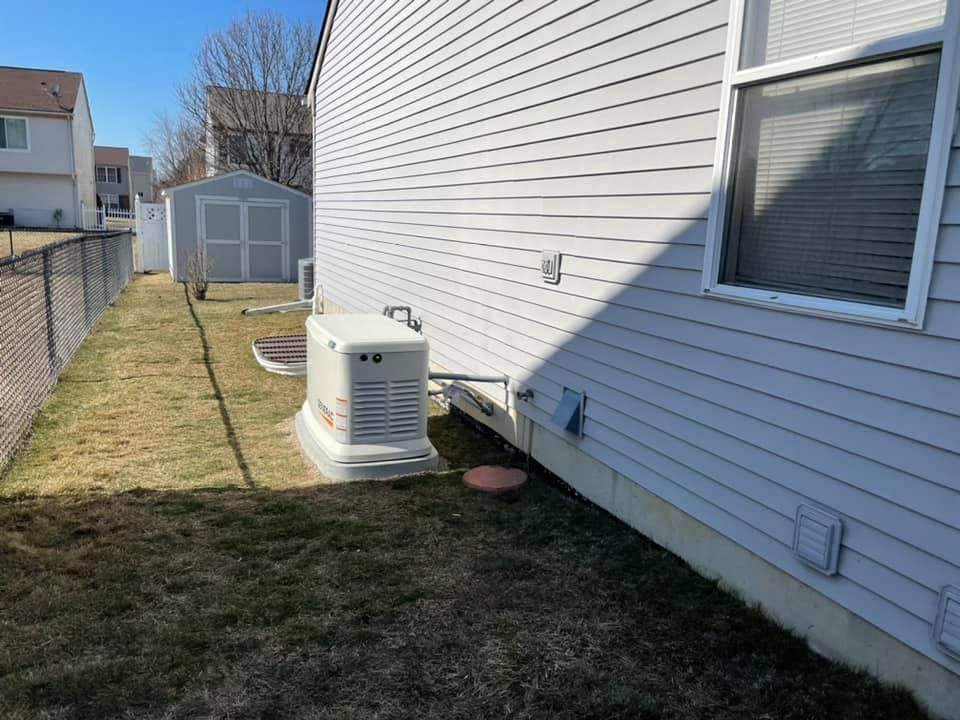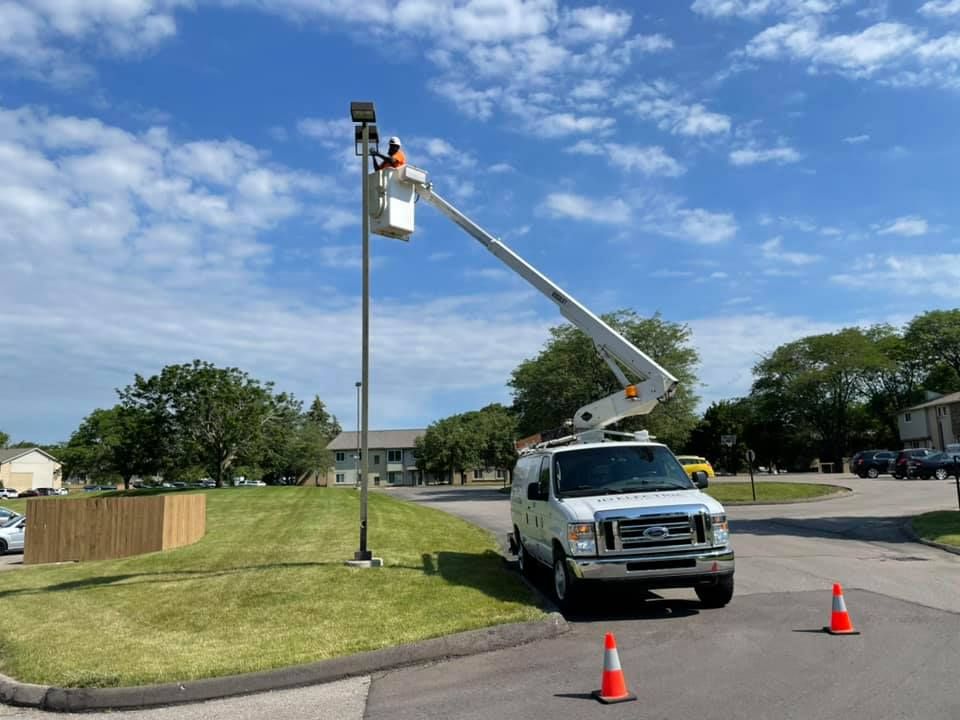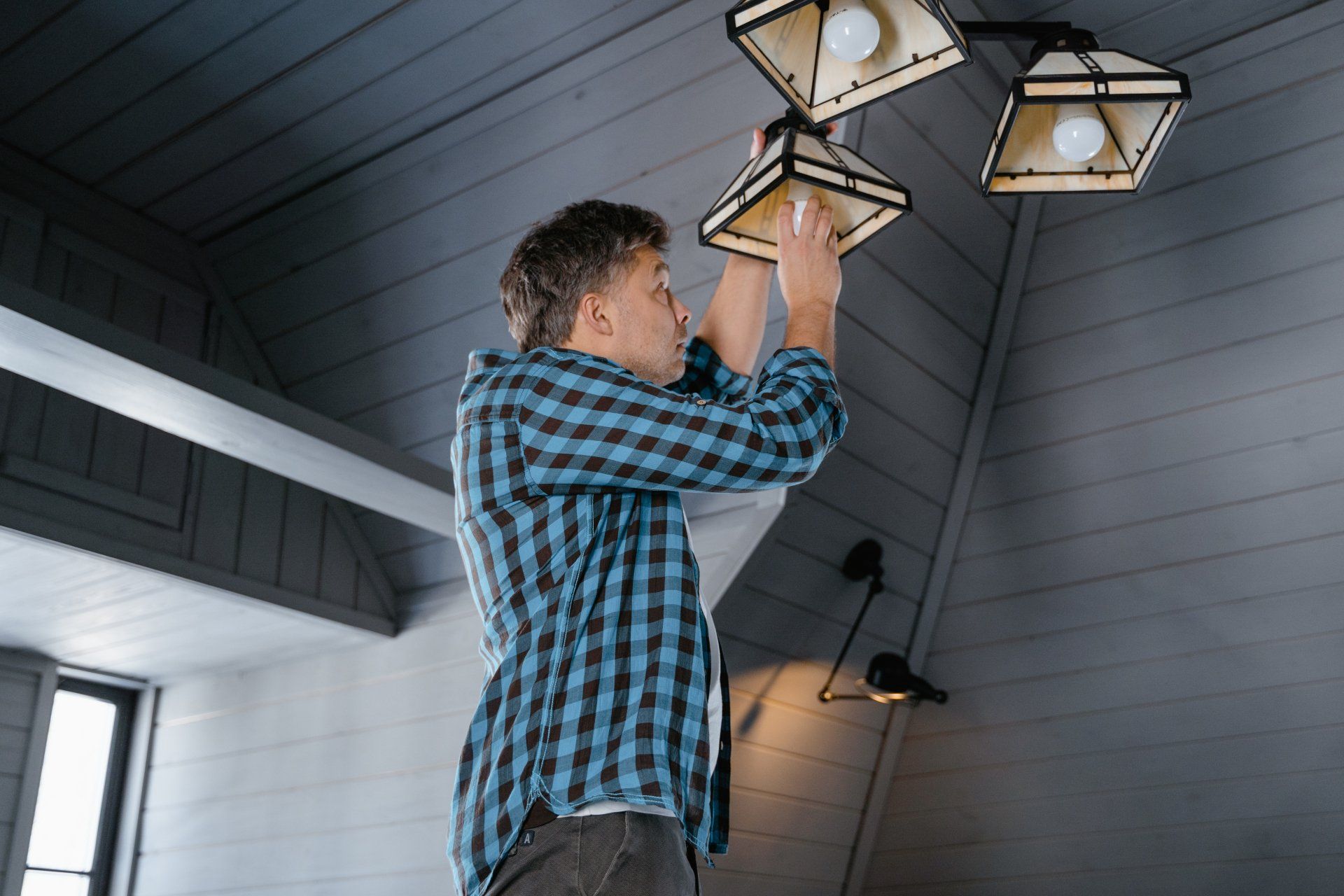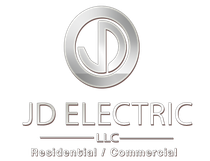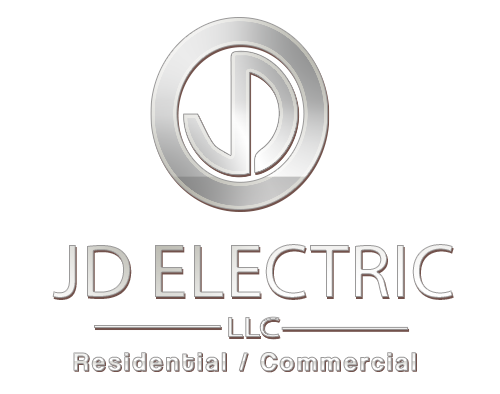

Residential / Commercial
Electrical Services
BLOG

By Johnathan Dohono
•
26 Jun, 2023
Introduction: Smart home automation has revolutionized the way we interact with our living spaces, offering convenience, efficiency, and enhanced control over various aspects of our homes. From lighting and security to temperature and entertainment, smart home automation systems provide seamless integration and customization. In this blog post, we will explore the exciting world of home automation, its benefits, popular devices and technologies, and how it is shaping the future of smart living. Understanding Home Automation We will start by explaining the concept of home automation, which involves connecting and controlling various devices and systems within your home through a centralized smart hub or smartphone app. We will discuss the underlying technology, such as Internet of Things (IoT) devices, wireless communication protocols, and voice assistants that enable the automation and remote control of household functions. Benefits of Home Automation Home automation offers a multitude of benefits for homeowners. We will explore advantages such as increased convenience, energy efficiency, enhanced security, improved comfort, and potential cost savings. Discover how automating your home can simplify daily tasks, provide peace of mind, and create a more efficient and enjoyable living environment. Popular Home Automation Devices and Technologies There is a wide range of devices and technologies available for home automation. We will discuss popular options such as smart thermostats, lighting systems, security cameras, door locks, voice assistants, and entertainment systems. Explore the features and capabilities of these devices and learn how they can be integrated to create a cohesive and comprehensive smart home ecosystem. Customizing Your Smart Home Experience One of the key advantages of home automation is the ability to customize your smart home experience to suit your preferences and lifestyle. We will discuss how to personalize automation routines, set schedules, create scenes, and utilize smart home apps to tailor your home automation system to meet your specific needs and preferences. Integration and Compatibility We will delve into the importance of compatibility and integration when setting up a home automation system. Understanding protocols such as Wi-Fi, Zigbee, and Z-Wave, as well as compatibility with voice assistants like Amazon Alexa and Google Assistant, will help you ensure seamless communication and integration between devices for a smooth and cohesive smart home experience. Future Trends in Home Automation The world of home automation is continuously evolving, with new advancements and innovations emerging regularly. We will explore future trends, such as the integration of artificial intelligence (AI), increased interoperability between devices, expansion of smart home security systems, and the potential for smart grid integration. Discover how these trends are shaping the future of smart living. Conclusion Home automation is transforming the way we interact with our homes, providing us with unprecedented control, convenience, and efficiency. By embracing smart home automation technologies, you can create a personalized and intelligent living space that enhances your lifestyle and simplifies daily routines. Start exploring the possibilities of smart living and take your home into the future with a well-designed and integrated home automation system. Take charge of your electrical needs today! Contact JD Electric LLC for expert solutions. Visit www.jdelectricllc.com or call (734) 216-0787 for a reliable and professional electrical service you can trust.

By Johnathan Dohono
•
23 Jun, 2023
Introduction Outdoor lighting serves a variety of purposes, from enhancing the aesthetic appeal of your property to improving safety and security. Whether you want to create a warm and inviting ambiance for outdoor gatherings or illuminate pathways and landscapes, proper outdoor lighting design is key. In this blog post, we will provide a comprehensive guide to outdoor lighting design, covering various techniques, fixtures, and considerations to help you transform your outdoor spaces into captivating and functional environments. Understanding Outdoor Lighting Design Principles We will explore the fundamental principles of outdoor lighting design, including the concepts of focal points, layering, and balance. Understanding these principles will allow you to create a cohesive lighting scheme that highlights key features, creates depth, and achieves visual harmony in your outdoor areas. Types of Outdoor Lighting Fixtures From path lights and spotlights to wall sconces and string lights, there is a wide array of outdoor lighting fixtures available. We will discuss different types of fixtures, their specific purposes, and how to strategically incorporate them into your outdoor lighting design to achieve the desired effect. Highlighting Architectural Elements Outdoor lighting can accentuate the architectural features of your home, adding drama and elegance to its exterior. We will provide insights on how to use lighting techniques, such as uplighting, downlighting, and grazing, to showcase architectural details and create a stunning visual impact. Creating Ambiance with Outdoor Lighting Outdoor lighting design is not just about functionality; it also plays a significant role in setting the right ambiance for your outdoor spaces. We will explore techniques for creating various moods, such as using warm or cool lighting, dimming options, and incorporating decorative lighting elements to evoke a desired atmosphere. Enhancing Safety and Security Outdoor lighting is crucial for ensuring safety and security around your property. We will discuss techniques for effectively lighting pathways, steps, and entrances to prevent accidents and deter intruders. Additionally, we will explore the integration of motion sensors and smart lighting controls for added convenience and security. Energy Efficiency and Sustainability Incorporating energy-efficient lighting solutions into your outdoor design is not only environmentally friendly but also cost-effective. We will delve into the importance of using LED lighting, implementing timers or sensors for efficient energy use, and exploring solar-powered lighting options to reduce your carbon footprint and save on electricity bills. Conclusion Outdoor lighting design is a powerful tool for transforming your outdoor spaces into functional, visually appealing, and safe environments. By understanding the principles of design, selecting the right fixtures, and considering factors such as ambiance, safety, and sustainability, you can create a captivating outdoor lighting scheme that enhances your property's beauty and maximizes its usability. Consult with a professional lighting designer or electrician to bring your vision to life and enjoy the benefits of a well-designed outdoor lighting system. Take charge of your electrical needs today! Contact JD Electric LLC for expert solutions. Visit www.jdelectricllc.com or call (734) 216-0787 for a reliable and professional electrical service you can trust.

By Johnathan Dohono
•
23 Jun, 2023
As the demand for clean and sustainable energy grows, residential energy storage systems have emerged as a promising solution for homeowners. These systems allow individuals to store excess energy generated from renewable sources and utilize it during times of high demand or when the renewable sources are not producing electricity. In this blog post, we will explore the rise of residential energy storage systems, their benefits, and their role in shaping the future of home energy management. Understanding Residential Energy Storage Systems: Residential energy storage systems are comprised of batteries or other storage technologies that store electricity generated from renewable sources, such as solar panels or wind turbines. We will discuss how these systems work, their components, and the different types of batteries commonly used for residential energy storage. Benefits of Residential Energy Storage Systems: There are numerous benefits associated with residential energy storage systems. We will explore these advantages, including energy independence, increased self-consumption of renewable energy, reduced reliance on the grid, and the potential for cost savings through time-of-use optimization and grid arbitrage. Optimizing Solar Energy with Energy Storage: Pairing residential energy storage systems with solar panels can significantly enhance the benefits of solar energy. We will discuss how energy storage allows homeowners to maximize self-consumption, store excess energy for use during nighttime or cloudy days, and potentially reduce reliance on the grid, leading to greater energy independence. Demand Response and Grid Flexibility: Residential energy storage systems have the potential to contribute to grid flexibility and demand response initiatives. We will explore how these systems can be integrated into smart grid networks, allowing homeowners to participate in demand response programs and provide valuable energy resources to the grid during peak demand periods. The Role of Energy Storage in Emergency Preparedness: Residential energy storage systems can also serve as backup power sources during grid outages or emergencies. We will discuss how these systems can provide homeowners with reliable power for critical loads, such as lighting, refrigeration, and medical equipment, ensuring greater resilience and peace of mind. Trends and Future Outlook: We will examine current trends in residential energy storage systems, including decreasing costs, technological advancements, and increasing consumer demand. Additionally, we will discuss the potential future developments in the field, such as improved battery technologies, increased energy storage capacity, and integration with smart home automation systems. Conclusion: Residential energy storage systems offer homeowners the opportunity to take control of their energy usage, maximize the benefits of renewable energy sources, and contribute to a more sustainable energy future. With their numerous advantages and evolving technologies, these systems are becoming an integral part of home energy management. By embracing residential energy storage, homeowners can play an active role in the transition to clean and resilient energy systems. Take charge of your electrical needs today! Contact JD Electric LLC for expert solutions. Visit www.jdelectricllc.com or call (734) 216-0787 for a reliable and professional electrical service you can trust.

By Johnathan Dohono
•
16 Jun, 2023
Electrical systems are an integral part of our homes, providing power for lighting, appliances, and other electrical devices. To ensure the safety of residents, electrical installations must adhere to electrical codes and regulations. Electrical code compliance plays a crucial role in preventing electrical hazards, minimizing the risk of fires and electrical accidents, and ensuring the safe operation of residential wiring. In this blog post, we will discuss the importance of electrical code compliance and provide insights into how homeowners can ensure safety by adhering to these codes. Understanding Electrical Codes: Electrical codes are a set of regulations and standards established by regulatory authorities to ensure the safe installation, operation, and maintenance of electrical systems. These codes address various aspects, including wiring methods, grounding, circuit protection, electrical panel requirements, and more. Familiarize yourself with the electrical codes applicable to your region to gain a better understanding of the safety requirements. Hiring a Licensed Electrician: When it comes to electrical work in your home, it's crucial to hire a licensed and experienced electrician. Licensed electricians have the necessary knowledge and expertise to understand and implement electrical codes correctly. They will ensure that your electrical installations and modifications comply with the applicable codes, reducing the risk of safety hazards and ensuring a safe and reliable electrical system. Proper Wiring Methods and Practices: Adhering to proper wiring methods is essential for electrical code compliance. This includes using appropriate wiring materials, maintaining proper wire size and insulation, and following the correct installation techniques. Improper wiring can lead to electrical hazards, such as short circuits, overloads, and electrical fires. Ensure that all wiring work in your home is performed by qualified professionals who understand and follow the approved wiring practices. Grounding and Bonding: Proper grounding and bonding are critical for electrical safety. Grounding provides a path for electrical current to safely dissipate in the event of a fault or electrical surge, while bonding ensures the equalization of electrical potential between conductive materials. Adhere to the specific grounding and bonding requirements outlined in the electrical codes to prevent electrical shocks, protect against electrical faults, and maintain the integrity of the electrical system. Electrical Panel Requirements: The electrical panel is the central distribution point for electrical power in your home. It is essential to ensure that your electrical panel meets the requirements set forth in the electrical codes. This includes having adequate panel capacity, proper labeling of circuits, appropriate access clearance, and compliance with safety standards for panel installation and maintenance. Regularly inspect your electrical panel to ensure compliance and promptly address any issues or deficiencies. Safety Devices and Circuit Protection: Electrical codes mandate the use of safety devices, such as circuit breakers and ground fault circuit interrupters (GFCIs), to protect against electrical hazards. Circuit breakers prevent overloads and short circuits, while GFCIs monitor electrical imbalances and provide rapid shut-off in the event of ground faults. Ensure that your home is equipped with the appropriate safety devices in accordance with the electrical codes to enhance the safety of your electrical system. Permits and Inspections: For significant electrical work or modifications in your home, obtaining the necessary permits and scheduling inspections is crucial for electrical code compliance. Permits ensure that the work is performed by licensed professionals, while inspections verify that the installations meet the applicable codes and standards. Working without permits or skipping inspections can result in safety hazards, legal issues, and potential insurance complications. Regular Maintenance and Updates: Electrical code compliance is an ongoing process. Regular maintenance and updates are necessary to ensure continued compliance and safety. Regularly inspect your electrical system, address any deficiencies, and keep up with changes in electrical codes and regulations. Periodically consult with licensed electricians to assess the condition of your electrical system, identify potential issues, and implement necessary upgrades or modifications. Electrical code compliance is paramount for ensuring safety in residential wiring. By understanding electrical codes, hiring licensed electricians, following proper wiring methods, emphasizing grounding and bonding, adhering to electrical panel requirements, using safety devices, obtaining permits and inspections, and conducting regular maintenance, homeowners can create a safe and code-compliant electrical system. Prioritize electrical code compliance to safeguard your home, protect your family, and ensure the reliable operation of your electrical installations. Call JD Electric for your home project today!

By Johnathan Dohono
•
16 Jun, 2023
Electrical systems are the backbone of our homes, providing power for lighting, appliances, and everyday conveniences. However, as technology advances and our energy needs evolve, it's essential to ensure that our electrical infrastructure keeps up. Electrical upgrades not only enhance the safety and functionality of your home but also provide the foundation for a modern and efficient living space. In this blog post, we will explore the importance of electrical upgrades and discuss various upgrades you can consider to enhance the safety and functionality of your home's electrical infrastructure. Upgrading Electrical Panels and Service: Your electrical panel is the hub that distributes power throughout your home. If you have an older panel with limited capacity or outdated components, it may not be able to handle the electrical demands of today's appliances and electronics. Consider upgrading to a larger capacity panel with modern circuit breakers to ensure safe and reliable power distribution. Installing Ground Fault Circuit Interrupters (GFCIs): GFCIs are crucial for protecting against electrical shocks and reducing the risk of electrical fires. These devices quickly detect imbalances in electrical currents and shut off power to prevent accidents. Install GFCIs in areas prone to moisture, such as bathrooms, kitchens, laundry rooms, and outdoor outlets. Upgrading Wiring Systems: Outdated wiring, such as knob and tube or aluminum wiring, can be hazardous and may not meet current safety standards. Consider upgrading your wiring system to modern copper or copper-clad aluminum wiring. This will improve electrical conductivity, reduce the risk of overheating, and ensure compatibility with modern appliances. Adding Additional Outlets: As our reliance on electrical devices increases, having an adequate number of outlets becomes essential. Insufficient outlets can lead to the use of extension cords, which can be a safety hazard. Consider adding additional outlets in rooms where you frequently use multiple devices or in areas where outlets are scarce. Smart Home Integration: Transform your home into a smart home by integrating smart devices and automation. Smart home technology allows you to control lighting, thermostats, security systems, and other electrical devices remotely. Enhance energy efficiency, convenience, and security by incorporating smart switches, outlets, and integrated home automation systems. Energy-Efficient Lighting: Upgrade to energy-efficient lighting solutions, such as LED (light-emitting diode) bulbs. LED bulbs consume significantly less energy than traditional incandescent bulbs, resulting in long-term cost savings and reduced environmental impact. Additionally, LED bulbs have a longer lifespan, reducing the frequency of replacements. Whole-House Surge Protection: Protect your valuable electronics and appliances from power surges by installing whole-house surge protection. These devices safeguard your home's electrical system against voltage spikes caused by lightning strikes or utility fluctuations. Whole-house surge protection provides comprehensive protection for all connected devices, offering peace of mind and preventing costly damage. Dedicated Circuits for High-Powered Appliances: Certain appliances, such as refrigerators, air conditioners, and electric ranges, require dedicated circuits to ensure proper operation and prevent circuit overloads. Consult with an electrician to determine if dedicated circuits are necessary for your high-powered appliances and have them installed for optimal safety and performance. Outdoor Electrical Upgrades: Enhance the functionality and safety of your outdoor spaces by considering electrical upgrades. Install outdoor outlets for convenience, add landscape lighting for ambiance, and ensure proper electrical grounding for pools, spas, and other outdoor amenities. These upgrades create a more enjoyable and secure outdoor living environment. Regular Electrical Maintenance: Once you've made electrical upgrades in your home, it's important to schedule regular maintenance to ensure continued safety and functionality. Schedule periodic inspections with a licensed electrician to identify any potential issues, perform necessary maintenance, and address any emerging electrical concerns. Electrical upgrades play a vital role in enhancing the safety, functionality, and energy efficiency of your home. By upgrading electrical panels, installing GFCIs, upgrading wiring systems, adding additional outlets, integrating smart home technology, using energy-efficient lighting, installing whole-house surge protection, implementing dedicated circuits, considering outdoor electrical upgrades, and scheduling regular maintenance, you can create a modern, safe, and efficient electrical system that meets your family's needs. Consult with a qualified electrician to assess your home's electrical infrastructure and guide you in making the appropriate upgrades for your specific requirements. Call JD Electric LLC for all your electrical needs.

By Johnathan Dohono
•
13 Jun, 2023
Owning an older home can bring a unique charm and character, but it may also come with its fair share of electrical challenges. Outdated electrical systems, aging components, and insufficient wiring can lead to various electrical problems if not addressed properly. In this blog post, we will discuss some of the common electrical problems found in older homes and provide practical tips on how to address and prevent them. By understanding these issues and taking proactive measures, homeowners can ensure the safety and functionality of their electrical systems. Outdated Electrical Wiring: One of the most common issues in older homes is outdated electrical wiring. Knob and tube wiring or aluminum wiring, which were once standard practices, may not meet current safety standards. Upgrading the wiring to modern standards is crucial for the safety and efficiency of your home's electrical system. Hire a licensed electrician to assess the wiring and recommend appropriate upgrades or rewiring solutions. Insufficient Electrical Capacity: Older homes were not built to accommodate the high electrical demands of today's modern lifestyle. Insufficient electrical capacity can result in tripped breakers, overloaded circuits, or flickering lights. Consider upgrading the electrical panel and service to meet the increased power requirements. This will help distribute electricity more evenly throughout the house and prevent overloading. Inadequate Grounding: Proper grounding is essential for electrical safety. However, older homes may lack proper grounding or have outdated grounding systems. Inadequate grounding increases the risk of electrical shock and damage to sensitive electronic devices. Consult with an electrician to ensure your home has proper grounding and consider installing ground fault circuit interrupters (GFCIs) in areas prone to moisture, such as bathrooms and kitchens. Faulty Outlets and Switches: Over time, outlets and switches can become worn out, loose, or faulty. This can lead to intermittent power, sparks, or even electrical fires. Inspect all outlets and switches in your home for signs of damage, such as cracks, loose connections, or scorch marks. Replace any defective outlets or switches promptly to prevent further issues and ensure the safety of your electrical system. Lack of Grounded Outlets: Older homes may have a limited number of grounded outlets. Grounded outlets are essential for protecting your electrical devices and minimizing the risk of electrical shock. Consider hiring an electrician to install additional grounded outlets where needed, especially in areas where you use high-powered appliances or electronics. Overloaded Circuits: The electrical demands of modern households have increased significantly compared to when older homes were built. Overloading circuits by plugging in too many devices or using high-wattage appliances can lead to overheating, tripped breakers, or electrical fires. Distribute your electrical load evenly across multiple circuits and avoid using multiple high-wattage devices on the same circuit simultaneously. Insufficient Lighting: Older homes may have limited or outdated lighting fixtures. Inadequate lighting not only affects the aesthetics of your home but also poses safety risks. Upgrade to energy-efficient LED lighting and ensure proper installation to brighten up your space while reducing energy consumption. Flickering or Dimming Lights: Flickering or dimming lights can be indicative of underlying electrical issues. It may be a sign of loose connections, outdated wiring, or problems with the electrical panel. Have a professional electrician inspect your electrical system to identify and resolve the root cause of the flickering or dimming lights. Electrical Code Compliance: Older homes may not meet current electrical codes and safety standards. It's essential to bring your electrical system up to code to ensure the safety of your home and comply with regulations. Consult with a licensed electrician to conduct an electrical inspection and make necessary upgrades to meet the current code requirements. Regular Electrical Inspections: To prevent and address electrical problems in older homes, regular electrical inspections are crucial. Hire a qualified electrician to conduct periodic inspections to identify potential issues, assess the condition of your electrical system, and recommend appropriate maintenance or upgrades. Addressing and preventing common electrical problems in older homes is essential for maintaining a safe and functional electrical system. By addressing outdated wiring, upgrading electrical capacity, ensuring proper grounding, replacing faulty outlets and switches, installing grounded outlets, avoiding circuit overloads, upgrading lighting, addressing flickering or dimming lights, complying with electrical codes, and conducting regular inspections, homeowners can ensure the safety, efficiency, and reliability of their electrical systems in older homes. Remember to consult with licensed electricians for professional guidance and assistance in addressing these electrical challenges.

By Johnathan Dohono
•
13 Jun, 2023
In any workplace, electrical hazards pose significant risks to employees and can lead to injuries, accidents, or even fatalities. Creating a safe working environment is crucial, and that includes identifying and mitigating electrical hazards. In this blog post, we will explore common electrical hazards in the workplace and provide practical tips for creating a safer work environment. By implementing proper safety measures, employers can protect their employees and minimize the potential risks associated with electrical hazards. Understanding Electrical Hazards: To effectively address electrical hazards, it's essential to understand what they are and how they can occur in the workplace. Electrical hazards may include faulty wiring, exposed live wires, damaged electrical equipment, improper grounding, and inadequate insulation. By recognizing these hazards, employers can take the necessary steps to mitigate the risks. Conducting a Workplace Electrical Hazard Assessment: Begin by conducting a thorough assessment of the workplace to identify potential electrical hazards. This assessment should involve inspecting electrical equipment, wiring systems, and electrical panels. Look for signs of wear and tear, exposed wires, or any other indicators of electrical hazards. It's crucial to involve qualified electricians or safety professionals in this process to ensure accuracy and expertise. Implementing Safety Measures: Once the electrical hazards are identified, it's time to implement safety measures to create a safer work environment. Some essential safety measures include: Electrical Equipment Maintenance: Regularly inspect and maintain electrical equipment to ensure proper functioning and identify any potential hazards. This includes testing, calibrating, and repairing equipment as needed. Electrical Panel Safety: Keep electrical panels accessible, properly labeled, and free from obstructions. Only authorized personnel should have access to electrical panels, and safety procedures should be in place for panel maintenance and repairs. Proper Wiring Practices: Ensure that all wiring is done by qualified professionals, adhering to electrical codes and standards. Avoid overloading circuits and use appropriate wiring methods to minimize the risk of electrical hazards. Grounding and Bonding: Implement proper grounding and bonding practices to prevent electrical shocks and reduce the risk of electrocution. This includes grounding electrical systems, equipment, and conducting regular inspections to ensure their effectiveness. Electrical Safety Training: Provide comprehensive electrical safety training to all employees. Train them on recognizing electrical hazards, proper use of electrical equipment, and emergency procedures. Regular refresher courses and updates on safety protocols are also crucial. Regular Inspections and Maintenance: Electrical hazards can arise over time due to wear and tear or changes in the workplace. Conduct regular inspections to identify and address any emerging electrical hazards promptly. Ensure that electrical systems and equipment are properly maintained, and schedule routine maintenance activities to prevent malfunctions or accidents. Encouraging Employee Involvement: Employees should be actively encouraged to report any electrical hazards they observe in the workplace. Establish a clear reporting mechanism, such as an anonymous safety hotline or a designated safety officer, to encourage open communication about potential hazards. Promptly address reported concerns and take appropriate action to rectify the issues. Compliance with Electrical Safety Standards: Adhere to relevant electrical safety standards and regulations set forth by authorities and regulatory bodies. Stay updated on any changes or new requirements and ensure that your workplace remains compliant. Compliance with safety standards is essential for creating a safe working environment and avoiding legal repercussions. Creating a safer work environment requires proactive measures to identify, mitigate, and prevent electrical hazards. By understanding common electrical hazards, conducting thorough assessments, implementing safety measures, providing employee training, and staying compliant with safety standards, employers can significantly reduce the risk of electrical accidents and injuries. Prioritizing electrical safety not only protects employees but also contributes to a productive and thriving workplace. Remember, electrical safety is an ongoing process that requires regular inspections, maintenance, and continuous employee education. By fostering a safety-conscious culture, employers can create a workplace where electrical hazards are minimized, and the well-being of employees is prioritized. Call JD Electric LLC To help you with all of your commercial or residential electrical projects.
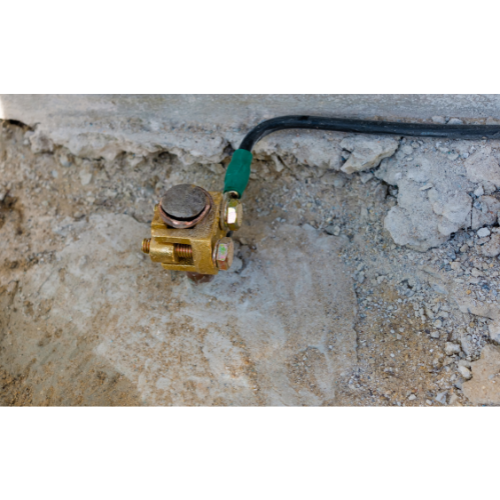
By Johnathan Dohono
•
31 May, 2023
When it comes to electrical systems, safety should always be a top priority. One crucial aspect of ensuring electrical safety is proper grounding. Grounding plays a vital role in protecting against electrical shocks, minimizing the risk of electrical fires, and safeguarding electrical equipment. In this blog post, we will explore the importance of grounding in electrical systems. By understanding its significance and implementing effective grounding practices, you can create a safer and more reliable electrical environment. What is Grounding? Grounding, also known as earthing, is the process of connecting electrical equipment, circuits, and appliances to the earth or a grounding system. It involves establishing a direct path for electrical currents to safely dissipate into the ground. Grounding typically involves the use of grounding conductors, grounding electrodes, and grounding systems. Protection Against Electrical Shocks: One of the primary reasons for grounding is to protect individuals from electrical shocks. In a properly grounded system, if a fault or electrical surge occurs, the excess electrical current is directed to the ground, effectively minimizing the risk of electric shock to people who come into contact with the equipment or circuit. Grounding provides an alternative path for the current to follow, diverting it away from individuals. Prevention of Electrical Fires: Grounding plays a crucial role in preventing electrical fires. In the event of a fault, such as a short circuit or electrical overload, a properly grounded system ensures that the excess electrical current flows directly to the ground, preventing the buildup of heat and reducing the risk of fire. Grounding helps protect electrical wiring, appliances, and other components by facilitating the safe dissipation of excess electrical energy. Equipment and Appliance Protection: Grounding is essential for the protection of electrical equipment and appliances. It helps to stabilize voltage levels, minimize voltage spikes, and provide a reference point for proper electrical operation. Grounding can prevent damage to sensitive electronics, extend the lifespan of electrical equipment, and reduce the risk of equipment malfunction or failure caused by electrical disturbances. Surge and Lightning Protection: Grounding is particularly crucial for protecting against power surges and lightning strikes. A properly grounded system can effectively redirect the high voltage from lightning strikes or power surges to the ground, preventing damage to electrical equipment and reducing the risk of fire. Surge protectors and grounding techniques work together to provide comprehensive protection against transient voltage events. Compliance with Electrical Codes and Standards: Proper grounding is not only essential for safety but also a requirement in electrical codes and standards. National and local electrical codes specify grounding practices to ensure electrical systems are installed and maintained in a safe and reliable manner. Compliance with these codes is essential for the well-being of individuals and for legal and insurance purposes. Grounding is a critical aspect of electrical systems, offering protection against electrical shocks, preventing fires, and safeguarding equipment. It is important to understand and implement proper grounding practices in your electrical installations. Consult with a qualified electrician to ensure your electrical system is effectively grounded, comply with electrical codes, and promote a safe and secure electrical environment for yourself, your family, and your property. Remember, electrical safety is everyone's responsibility.





